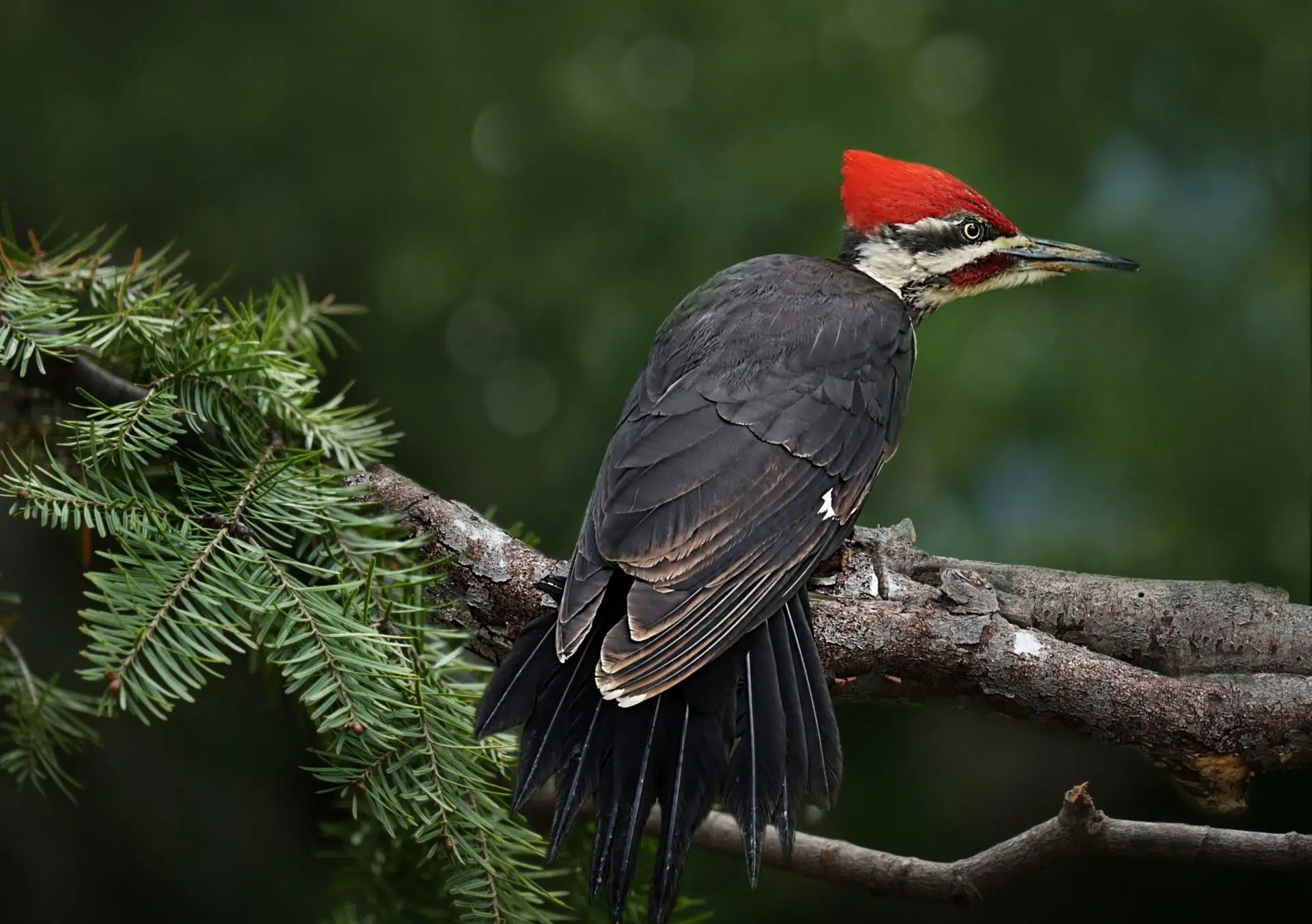Nature Profile
Birds
Pileated Woodpecker
Dryocopus pileatus

Pileated Woodpecker
Voice: "cuk-cuk-cuk-cuk-cuk"
This crow size bird is the largest woodpecker in Ohio. Although despite is size in large tracts of mature forest the Pileated Woodpecker is heard more often then is seen. Its voice is often described as a jungle animal somewhat like a monkey. In fact old Tarzan movies set in Africa often had the loud call of a Pileated Woodpecker in the background.
Besides its voice the most commonly recognized evidence that Pileated Woodpeckers inhabit a forest is the large rectangular holes found on dead and living trees. Single or multiple holes found 6 feet or lower on a tree trunk indicates the Pileated Woodpeckers search for its favorite food, carpenter ants. Once a rectangular hole is excavated Pileated Woodpeckers use their long barbed tongue to extract ants from tunnels. According to the Audubon Society,” In one study, Pileated Woodpeckers spent 58% of their foraging time on dead wood and 36% on live wood. In another study, the birds fed on dead wood 96% of the time, 44% on snags, and 36% in dead logs.” Besides ants, Pileated Woodpeckers also eat wood boring beetle larvae, berries, nuts and sometime suet.
Pileated Woodpeckers stay with the same mate for life. Pairs establish forest territories 150 acres or larger. They drum on trees with their beaks to attract mates and year long to announce the boundaries of their territories. During breeding season, within their territory they find a dead tree to excavate their home 15- 70 feet high. Excavation of their nesting cavity can take up to 6 weeks. In the end they line there nest with wood chips. They lay only one clutch per season. Both the male and female incubate up to 5 white eggs for around 16 days. In the event the dead tree falls from decay or a strong wind Pileated Woodpeckers have been observed moving their eggs out of the nest to another site. This is a rare habit in other birds. Once the eggs hatch both the female and male feed the young. The young typically leave the nest 22-26 days.
Want to help the Pileated Woodpecker? Pileated Woodpeckers are protected birds that are not currently listed as a threatened or endangered species. However they require large tracts of mature forest. Lumbering and development destroys habitat that have a significant impact on the Pileated Woodpecker survival. Dead or decaying trees are essential for Pileated woodpeckers nesting, roosting and feeding. Protect large tracts of old growth forest from being developed or lumbered. Save all dead or decaying trees, stumps or logs from being removed in cities, suburbs and rural areas.
Best Location to View: Old Valley Trail, Pierson’s Creek Loop, Woodland Trail
Range: Canada, North America
Size: Medium




